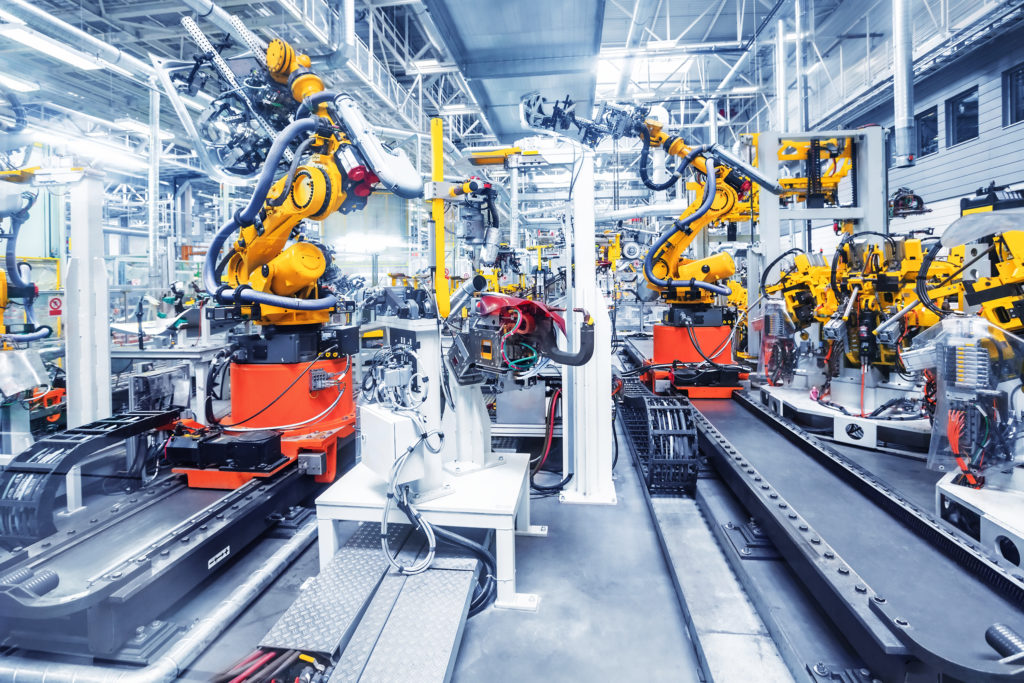In the past weeks, I have written about what digital transformation is[1], what makes digital transformations the most complex transformation there is[2] and what constitutes a successful digital transformation[3]. In this blog I would like to zoom in on the more practical side of digital transformations. Since my latest work experience was in the manufacturing industry I would like to start there. So this blog focuses on digital transformations in the manufacturing industry and especially what constitutes these transformations.
Zooming in on the manufacturing industry, McKinsey stated that successful digital transformations are hard to come by, with success rates for manufacturing around as low as 4-11%[4]. Manufacturing is just starting with the digital revolution and not experienced yet in these transformations according to RSM[5]. But ambitions are there and steps are taken towards more success.
The Digital Factory
The ambitions of some manufacturers go far, even as far as a completely ‘Autonomous Plant’ or ‘Digital Factory’. Autonomous plants comprises end-to-end autonomous production processes, which enable the factory to operate with limited human intervention. Autonomous Plants will be able to configure and reconfigure themselves in order to support emerging production models such as mass customization[6]. Read that last sentence again; this means that the plant has learning capabilities and is able to adapt on its on to changing conditions! A revolutionary concept if you ask me.
Aligning IT and OT
There is not (yet) a predetermined road to becoming an Autonomous Plant. It means experimenting and learning from others, for example in sector alignment or ecosystems. When looking at the Digital Factory itself, it needs an integrated design and alignment between IT and OT. In the past, this has been the difficulty for manufacturers. Information Technology (IT) (which underlies business systems) and Operational Technology (OT) (which powers manufacturing) have been difficult to link together[7]. This prohibited the alignment of data and good decision making. If, for example, a cheaper packaging product is bought, but this resulted in problems on the manufacturing floor since the packaging product is more difficult to handle, it took weeks or even months to discover that. Also, financial effects of closing or opening separate lines in a factory could not always be predicted based on the available information. Separate production lines could not be compared in performance. Finding root causes of problems in production like less cooling take up a lot of time in investigation and analysis instead of being able to analyse the data of leakages in the total system real-time. In short, enough examples of IT and OT not being aligned.
In the past, the bridging of the gaps between operations and technology seemed impossible because of needed investments to replace IT or OT. Now, with new technologies, it is possible to link IT and OT without huge investments. You just build on top of your current technology, combine the data sources and you are able to analyse the information and solve the problem. New technologies enabled this development. New technologies like smart devices, sensors and also robotization, digital twins, AI, virtual reality. All these technologies improve the outlook and monitoring of the factory and increase the insight and predictability of production and maintenance.
Use case first, technology second
One seduction, especially for manufacturers, is the use of new technologies combined with technical operations equipment. It is tempting to first choose a specific technology and then what you could do with it. Maintenance and operational employees love to work with the newest tools and technologies. “I love the sound of me saying I work with AI and digital twins”. This is sometimes fired up by suppliers with amazing technological solutions. Bear in mind that it is crucial to start a digital transformation because of business development and opportunities. Or to put it differently, business should be the driver of the digital transformation, not technology[8]. Use cases first, technology second[9].
Inspiring examples
Luckily, there are companies already showing that developing towards a Digital Factory is possible. For example, ABB has created a vision on the autonomous plant and is building a factory in Shanghai[10]. Or take Nokia for example. They have envisioned the ‘conscious factory’ combining the ‘Digital Factory’ concept with sustainability[11]. Exciting times and I am curious to see how this will develop!
[1] Blog – The origin and meaning of Digital Transformation: https://www.linkedin.com/pulse/origin-meaning-digital-transformation-anneke-veldink/
[2] Blog – The K2 of transformations: https://www.linkedin.com/pulse/k2-transformations-digital-business-anneke-veldink/
[3] Blog – How to create a successful digital business transformation: https://www.linkedin.com/pulse/how-create-successful-digital-business-transformation-anneke-veldink/
[4] Source: McKinsey – https://www.mckinsey.com/business-functions/organization/our-insights/unlocking-success-in-digital-transformations
[5] Source: RSM – https://rsmus.com/what-we-do/industries/industrials/key-drivers-of-digital-transformation-in-manufacturing.html
[6] Source: https://www.itexchangeweb.com/blog/industry4-0-the-rise-of-autonomous-industrial-plants/
[7] Source: McKinsey – https://www.mckinsey.com/business-functions/operations/our-insights/digital-performance-management-from-the-front-line-to-the-bottom-line
[8] Source: Harvard Business Review – https://hbr.org/2019/03/digital-transformation-is-not-about-technology
[9] Source: McKinsey – https://www.mckinsey.com/business-functions/operations/our-insights/digital-performance-management-from-the-front-line-to-the-bottom-line
[10] Source: ABB – https://www.youtube.com/watch?v=OT-OPjmEDHc
[11] Source: PWC – https://www.pwc.nl/nl/assets/documents/pwc-digital-factories-2020-shaping-the-future-of-manufacturing.pdf

Comments are closed